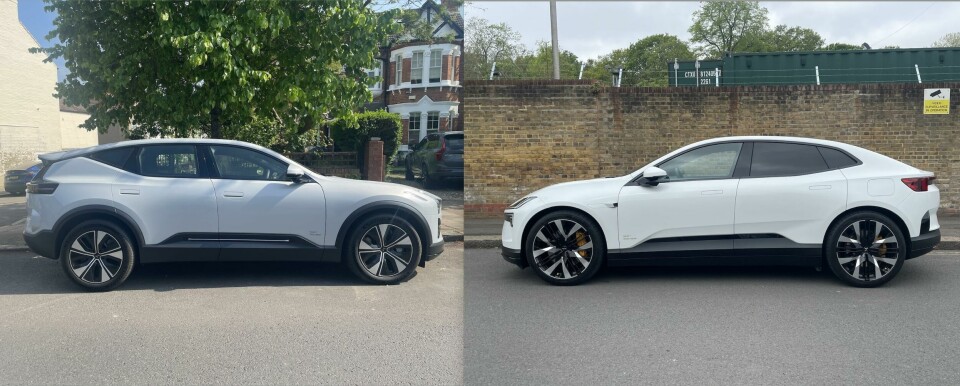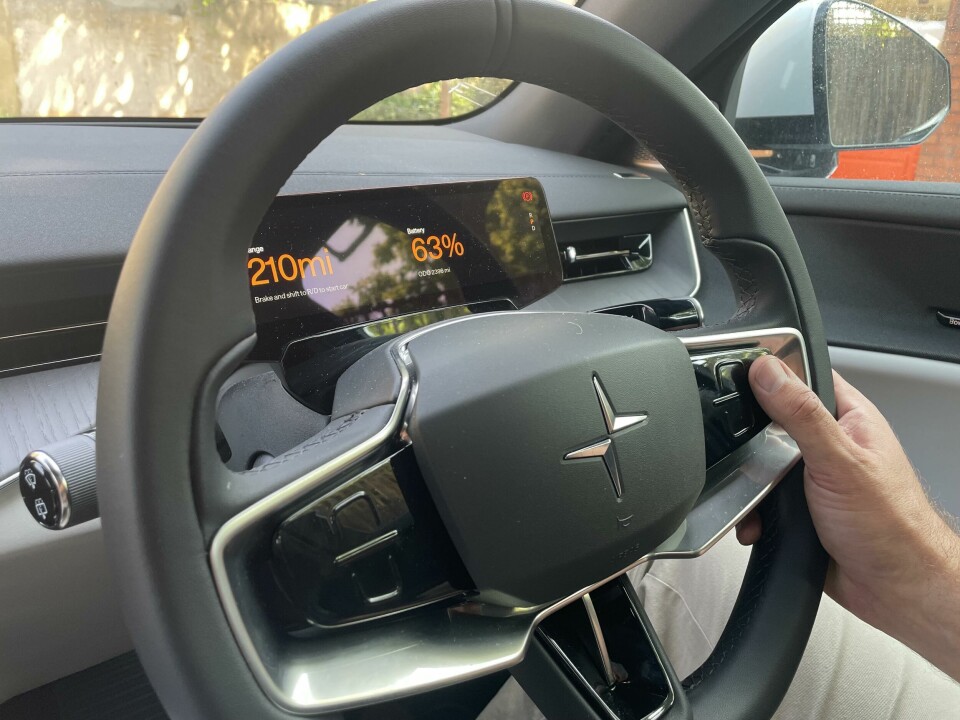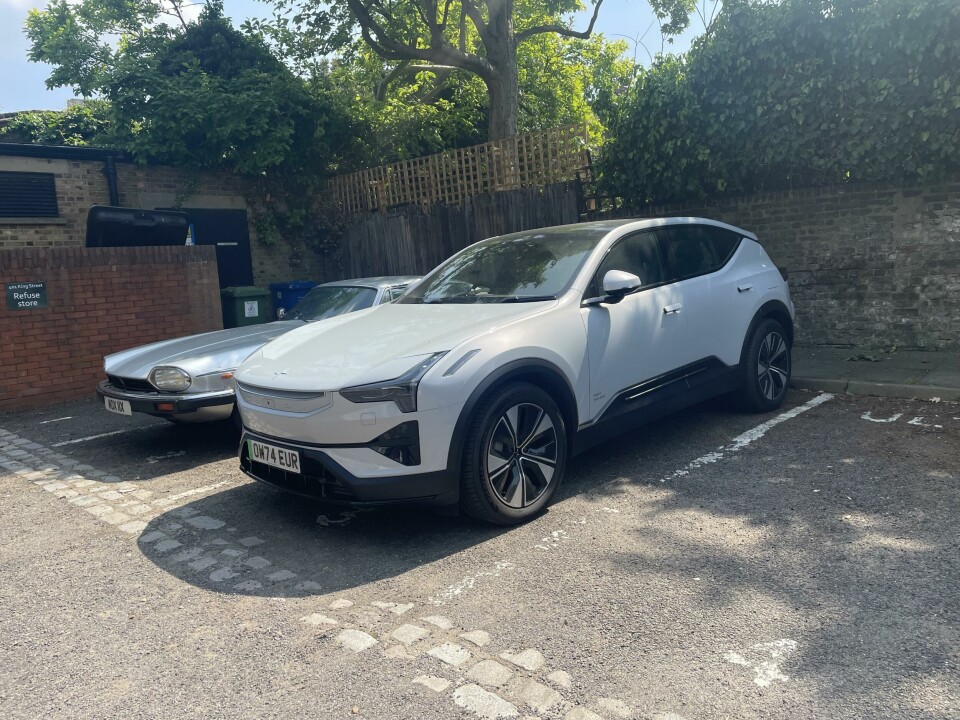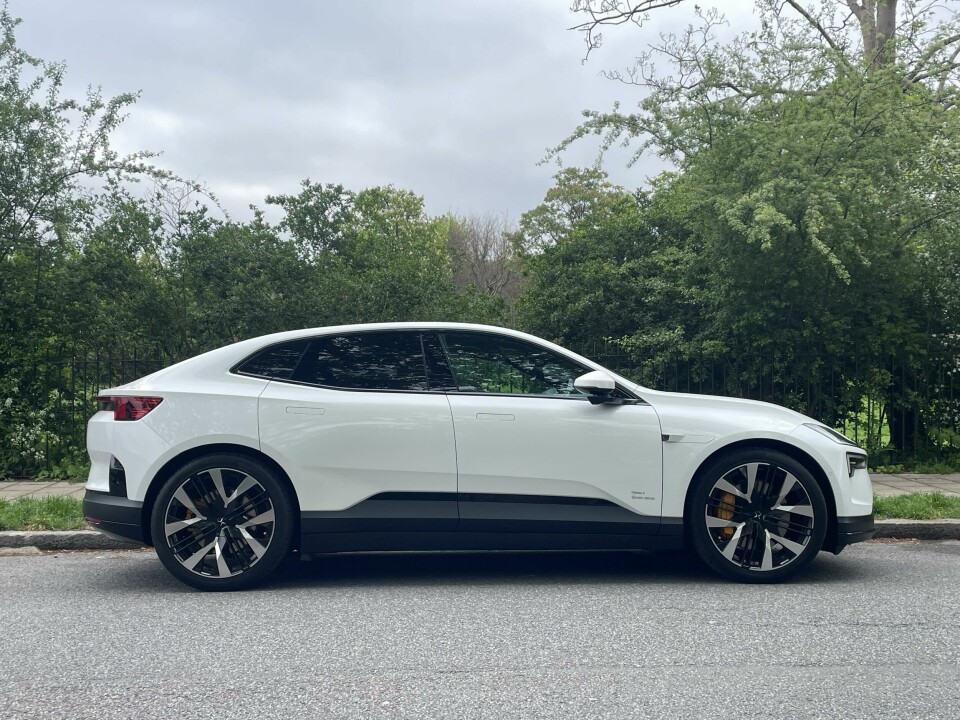Polestar 3 and 4 go toe-to-toe

Design Driven: Polestar 3 vs. Polestar 4
Car Design News pits the Polestar 3 against its newer, younger sibling in an all-in battle royale.Which slice of Chinese-funded scandi-minimalism will win out in this design face-off
We’ve been complimentary about Polestar in general and its latest 3 and 4 models in particular since their initial long-lead unveils in 2022 and 2023.
The wider car design world appears to be fans too, with our esteemed car designer judging panel voting the Polestar 4 CDN Production Car of the Year in Car Design Review X – and by a clear margin.

But virtual impressions are one thing, physical impressions quite another, especially when driven across the vagaries of various British roads. As these production cars start to appear on these shores with greater frequency, Car Design News decided to revisit both designs ‘In Real Life’.
Exteriors
Both the 3 and 4 still stand out as elegant pieces of exterior design in traffic, which is harder to achieve in the SUV (Polestar 3) and SUV Coupé (Polestar 4) segments these cars inhabit. But there are considerable differences in dimensions and proportions. Compared to the Polestar 3, the 4 is 70mm lower (1544mm), 61mm shorter (4839mm), 40mm wider (2008mm) and with a 14mm longer wheelbase (2999mm).
Both cars are also masterclasses in restraint. So many connections and joins have been thoughtfully resolved and although there are repeated references to the brand – from exterior lights to side panel stickers – on the whole it’s all pretty subtle.
Unlike the optional and very proud 22” alloy wheels fitted to this Polestar 4 test car as part of the £4000 Performance Pack, which while looking great, are a massive pain to keep unblemished, perhaps exacerbated by the car’s two-metre-plus width which can make the driver psychologically think to line up with other narrower parked cars when parallel parking and then come a cropper.
Uneven texture, variable height and depth London kerbstones are truly unforgiving too and alas, unlike so many car advertising marketing dreams, I don’t live in a floor-to-ceiling modernist mansion high on a hill with its own wide drive and spacious underground parking.
In contrast, the Polestar 3 test car’s slightly more sensible 20” wheels have more rubber around them and returned to their fleet owner intact. The 3 also has a more conventional rear window layout and is therefore easier to get to grips with from a driver usability and vision perspective but up close and on the road, the Polestar 4’s rear three-quarter exterior view is the more stunning, to these eyes at least.
Through the deletion of its rear window the 4’s greater expanse of bodywork in that area really does give it the look of a spaceship – especially in white.
Interiors
But how does the 4’s awesome exterior detail translate to its interior package? Sitting in the back of the 4 with no rear window behind, my worry was that it could feel claustrophobic. But because the full-length panoramic roof extends to above the rear passengers’ heads, it lets in loads of natural light. So the cabin feels spacious and airy. This windowless rear feature helps enable a lower roofline for this otherwise large SUV Coupé and could be the start of a 21st Century renaissance for the detail in passenger cars – Jaguar’s 2023 Type 00 concept is another recent example.
But there are some things to get used to. As a driver this detail means looking at an internal rearview mirror with a live video feed of the road behind (as some will know from the VW XL1, Honda e and more). That video can sometimes be visually overwhelming in busy traffic but it can also be easily turned off by pulling a physical switch in the middle of the bottom of the mirror.
The 4 is the newer Polestar – and feels like it
Acting like a van driver just using your wing mirrors, the rear view is good enough for most situations, bar perhaps tight reversing and rearward parking (where you might again fear for the safety of those exposed 22s).
The metal-effect interior door handles built into the shape of all four armrests are worth a mention too. Rest your arm on the armrest and the handle falls nicely to hand at the forward end: just pull it upwards slightly and the door opens beautifully. This design element on both the 3 and 4 (and newer Volvos) is a success, as it is intuitive to use, but remains tucked away visually. In the front seats the instrument panels of the 3 and 4 differ more than you might expect.
The 3 has a portrait-shaped centre touchscreen rather than the landscape-oriented one in the 4 and the two cars have different stereo systems, Bowers & Wilkins for the 3 and Harman Kardon for the 4. Both are great. And while the 4 has a conventional but well-resolved T-shaped dash joining to an upward sweeping centre console, the 3 has a more idiosyncratic split one, including a large gap between the upper dash and centre console.
That break might have seemed like a good idea on the drawing board in terms of access to the space beneath and also to promote a less-cocooned cabin feeling perhaps more appropriate for an SUV (rather than a sports car). However, that space is also big enough for light things – like mobile phones or transponder keys charging on the wireless charging pad – to fly off the end of the floating centre console if the driver breaks suddenly because the console’s surrounding lip is not high enough to contain them. And this is no hypothetical scenario.
A charging phone and key both flew forward into the footwell on two separate occasions in just a one-week test. Luckily, they only fell into the passenger footwell both times but could have ended up in the driver footwell, which would have been far from ideal. At the rear, passenger room is good in both cars and luggage space akin, with the 3 unsurprisingly slightly better (597 vs. 526 litres).
The numerous eco messages re Polestar’s green material choices on the 3 & 4’s seatbacks and floor mats split opinion too, with one passenger – and an EV owner himself – not liking that information constantly ‘up in his face’. Another passenger got irritated by the 3’s indicator noise too – reckoning it sounded a little like a gas hob trying to fire up, but without success. Easy fixes at facelift time both.
UX
The 4’s dashboard is a two-screen affair plus HUD, with a 15.4” landscape-oriented central touchscreen, 10.2” driver display and a 14.7” head-up display. Between the three, it’s clear what’s going on, with well-defined windows, fonts, graphic design and colours (orange is the consistent accent colour). Google Maps is built-in and safety bleeps can be turned off fairly easily. The 4’s ‘planets info’ is sort of novel – if pointless fun – for a bit too.

The 3’s set-up has a portrait centre screen – either orientation works for me – but unlike on the later 4 model, and seemingly every other car in the universe, the 3’s touch-sensitive buttons on its gloss-black steering wheel have no icons. Through trial and error I found that pressing one replicated the central screen’s map on the driver display, which was sort of useful, but if you want to adjust the wing mirrors you have to go a few layers deep within the centre touchscreen and then use steering wheel buttons to adjust up/down and left/right. Despite visual prompts in the driver display, it’s not intuitive or helpful for a function you might reasonably want to adjust on the move.
These buttons need icons to let users know what functions are handled. Not every driver is an owner after all, and if you’re offering cars as rental vehicles too – which Polestar is – intuitive ease of use is surely a priority. It’s another attempt at ‘less is more’ which for this driver resulted in ‘less is less’.
There are plenty of ‘shortcut’ touchscreen buttons at the centre screen’s base, for fan, heated seats and more. But the fan’s actual adjustment is still layers deep. Turning a physical knob would be simpler. Both vehicles suffered from phone-to-car connection issues and the 3’s keyless open and close was out of action all week. Not good. And we’ve heard similar from other testers.

Driving
The Polestar 4 drives in a really assured way and with the £4000 Performance Pack optioned, ultra-rapidly if desired. The 544hp twin electric motors can dispatch 0-60mph in a supercar 3.7 seconds and its 100kWh battery offers 367 miles of range. While driving modes and other options accessible from the centre touchscreen can liven things up further, these features would be better accessed directly via physical switches or dials.
After all, when a dynamic road presents itself, it’s fiddly – and potentially dangerous – to adjust driving mode and suspension set-up on the fly. The ride of the Polestar 3 by comparison seemed a bit wobbly when traversing undulating country roads. The cabin seemed too keen to follow the road surface rather than soaking up the changes and keeping passengers steady.
The 3 tested (without the Performance Pack) is slightly slower 0-60mph (4.8 seconds) but has a bigger 111kWh battery for greater range (390 miles). The 3’s ‘one-pedal’ function worked well in making driving easier and the car more controllable, but some passengers found its regenerative braking too harsh. Turning the ‘one-pedal’ function off – done via an easy shortcut at the bottom of the touchscreen – resulted in the car feeling like it was running away with itself, especially downhill.

Conclusions
These cars are fighting in the pricey premium EV sector with both new and traditional name rivals. The Polestar 4 costs £66,990 in the UK (and £75,040 as tested, including a hefty £1400 for metallic paint) while the Polestar 3 is £75,900 standard (and £89,800 after options including £5000 animal welfare Nappa leather with black ash deco). Of the two, the Polestar 3 has the more design compromises, although most (hopefully) fixable through future UX software upgrades.
The 4 is the newer Polestar – and feels like it – from hardware to software. And despite its downsides, it’s still a car I’d be happy to call my own, mainly based on its stunning exterior and interior, brand image and electric performance. Polestar 4 wins (and by some margin).
























